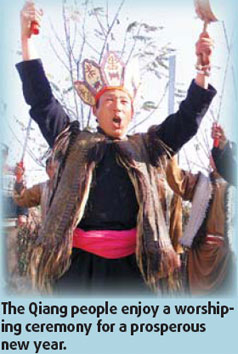Throughout the year, festivals of various ethnic groups are celebrated, including the Tibetan Shotan Festival, the Water-sprinkling Festival of the Dai people and the Torches Festival of the Yi.

"Most minority people are very good at singing and dancing. Participating in their activities helps us understand and respect their cultures more," says Lei Feng, a 47-year-old visitor to the park.
Liu Li, a 29-year-old visitor, took part in the "bamboo-pole dance" of the Dai people and found in it a long-lost joy like that of the "skipping elastic band" game in her childhood.
"In the past, I had to travel a long way to experience minority people's lives but now I've found it in Beijing," she says. "Separated only by a wall from the hustle and bustle of the North Fourth Ring Road, it is a totally different world here."
Wang says that after the outer construction of the Chinese Ethnic Culture Park and China Nationalities Museum is complete, they will still have a lot of work to do, especially in improving the presentation of ethnic culture and enriching collections.
The China Nationalities Museum has so far collected about 100,000 cultural relics of various ethnic groups. Especially valuable among them are 5,000 cultural relics of the Qiang people, housed in a typical watch tower. In the recent earthquake in Sichuan, the Beichuan Qiang autonomous county was badly hit and many cultural relics were ruined.
"Had we not collected these cultural relics, they would probably have been lost forever," says Wang.